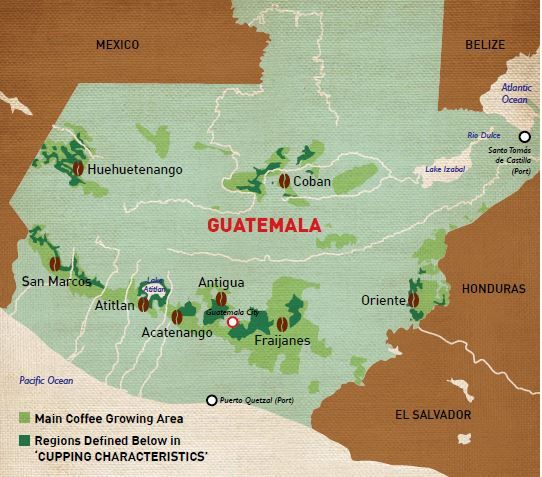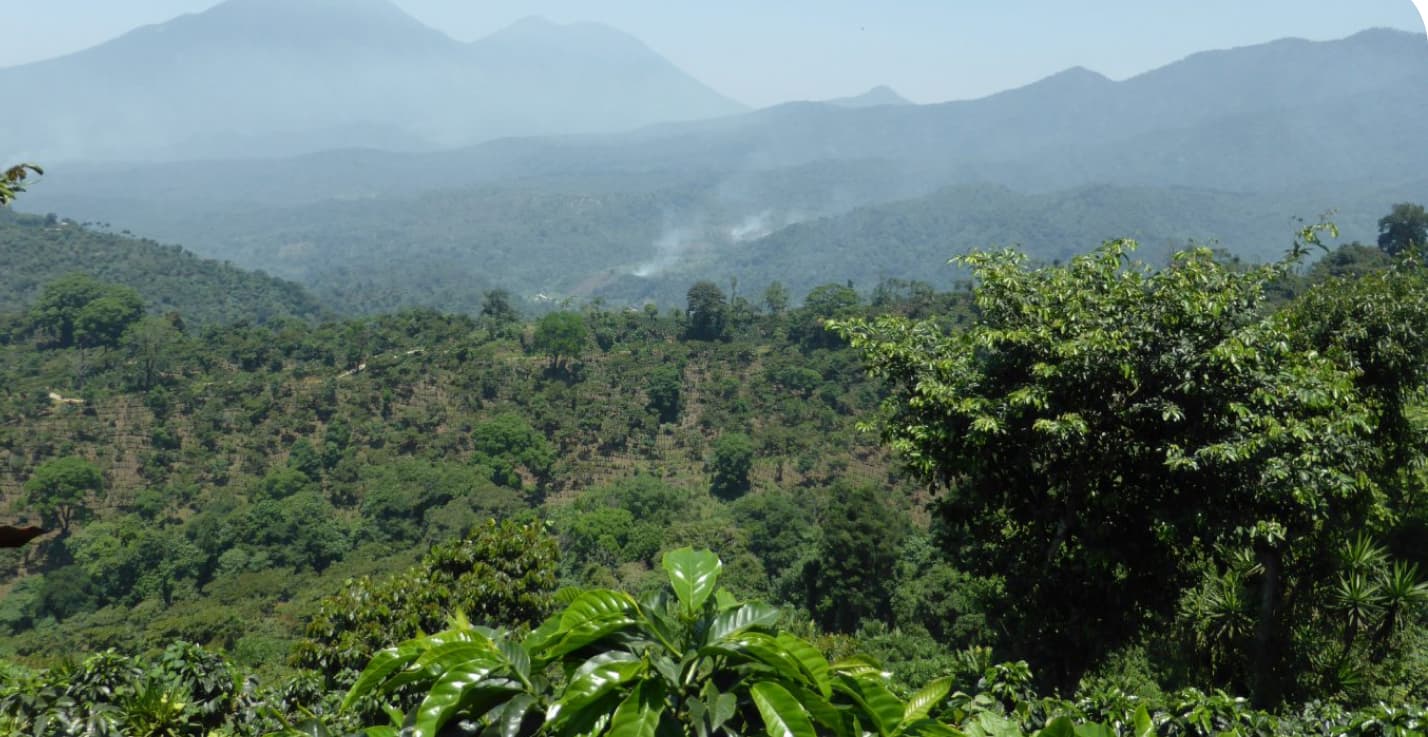
GUATEMALA
GUATEMALA : Coffee and Mayan cultural traditions
Guatemala is an American country with mountainous terrain, a tropical climate in the highlands, and a drier climate in the easternmost region. Therefore, this place is a paradise for growing perennial industrial crops like coffee. However, planting and producing coffee was once a painful memory of the Maya in Guatemala during the colonial period. Many traditional lands were turned into coffee plantations and the people turned into slaves to work on these plantations. However, the coffee tree was once an industrial tree to help people escape poverty.

Guatemala coffee production
Thanks to its ideal geographic location with temperatures from 16-32 degrees Celsius and an altitude of 500–5,000 meters above sea level, Guatemalan can grow coffee trees all year round. The four coffees grown in this country include Bourbon, Typica, Catuai, and Caturna.
In 2015, the price of coffee decreased sharply from $2.2/pound to 86 cents/kg. According to Refugees International, the wages of workers on coffee farms are $2/day. Despite the cheap wages, these workers are lucky to have jobs.
By 2017, many people could not sustain with meager sales and sold their farms to famous coffee brands leading to the increasing number of refugees. From August 2018 to September 2019, at least 211,000 refugees from Guatemala moved to the US and were arrested at the border.
In the crop year 2018 - 2019, Guatemala's coffee production is 3,750 thousand bags, equivalent to 225 million kg. Although the figures are down from the previous season, experts expected Guatemala's output to increase 1.1% in 2019–2020. Guatemala is as large as an American state, but it also forms different coffee-growing areas including:

ANTIGUA
Antigua is between three volcanoes Agua, Fuego, and Acatenango with a mild climate, lots of sunshine, and little rain. Along with volcanic soil and high humidity, this place is the ideal ground for coffee plants. The coffees at Antigua have the typical features of Guatemala's coffee.
Besides, Antigua is also a famous tourist destination in Guatemala because of its ancient architecture. It was in a UNESCO World Heritage Site in 2016.
ATITLAN
Lake Atitlan is also a famous landmark in Guatemala with an elevation of 1,538 m above sea level and surrounded by mountains and volcanoes. Meanwhile, the surrounding area is where the people here grow coffee. Thanks to the heavy rainfall, the fertile soil, the Atitlan coffee flavor is rich and of favorite.
HUEHUETENANGO – Cao nguyên cà phê Guatemala
Huehuetenango is the highest point of Guatemala with an altitude of more than 2,000 m above sea level. Although it is close to Mexico, this place is not foggy but windy that is suitable for coffee plants to grow. In particular, the coffee at Huehuetenango is known as the best coffee in this country with an unforgettable flavor.
NUOVO ORIENTE
Nuovo Oriente is about 1,300–1,600 m above sea level on the border of Honduras. In comparison with other locations, this land has a lot of rain, stable temperature, and suitable light for the growth of coffee trees.
Coffee trees have helped Guatemala people escape poverty in the early 21st century with the highest yield of about 5 million bags (with 60 kg/bag). However, in recent years, the volatile coffee prices make it increasingly difficult for coffee farmers in Guatemala to get profit.
Coffee leaf rust - the biggest concern of Guatemalan farmers
Since 2012, Guatemala's coffee price has been down because coffee leaf rust appeared and persisted for many years thereafter. This outbreak has reduced coffee production by 25%, requiring the Government of Guatemala to carry out many campaigns and provide solutions to help farmers. Although farmers have tried to incorporate chemical and organic methods as well as change the crop structure with disease-resistant coffee plants, the price of coffee has not improved yet.
The Guatemala Coffee Alliance
Guatemala farmers have faced many difficulties from natural factors to economic factors. To maintain and develop the coffee production and export industry in Guatemala, many organizations and individuals have created alliances, such as the National Coffee Association (Anacafé) and the Federation of Especial Coffee Commercialization of Guatemala (FECCEG). Both of these alliances represent thousands of coffee farmers across the country to research solutions for crops and promote their products.
Here is some information about coffee production in Guatemala. Despite many challenges, the Government and people here still regard this industry and strive to develop it into a sustainable and stable economic sector.

